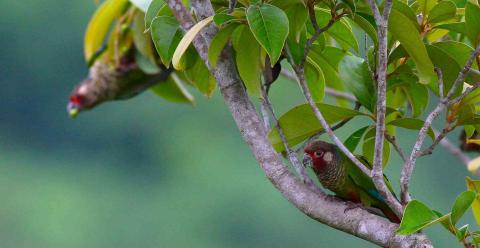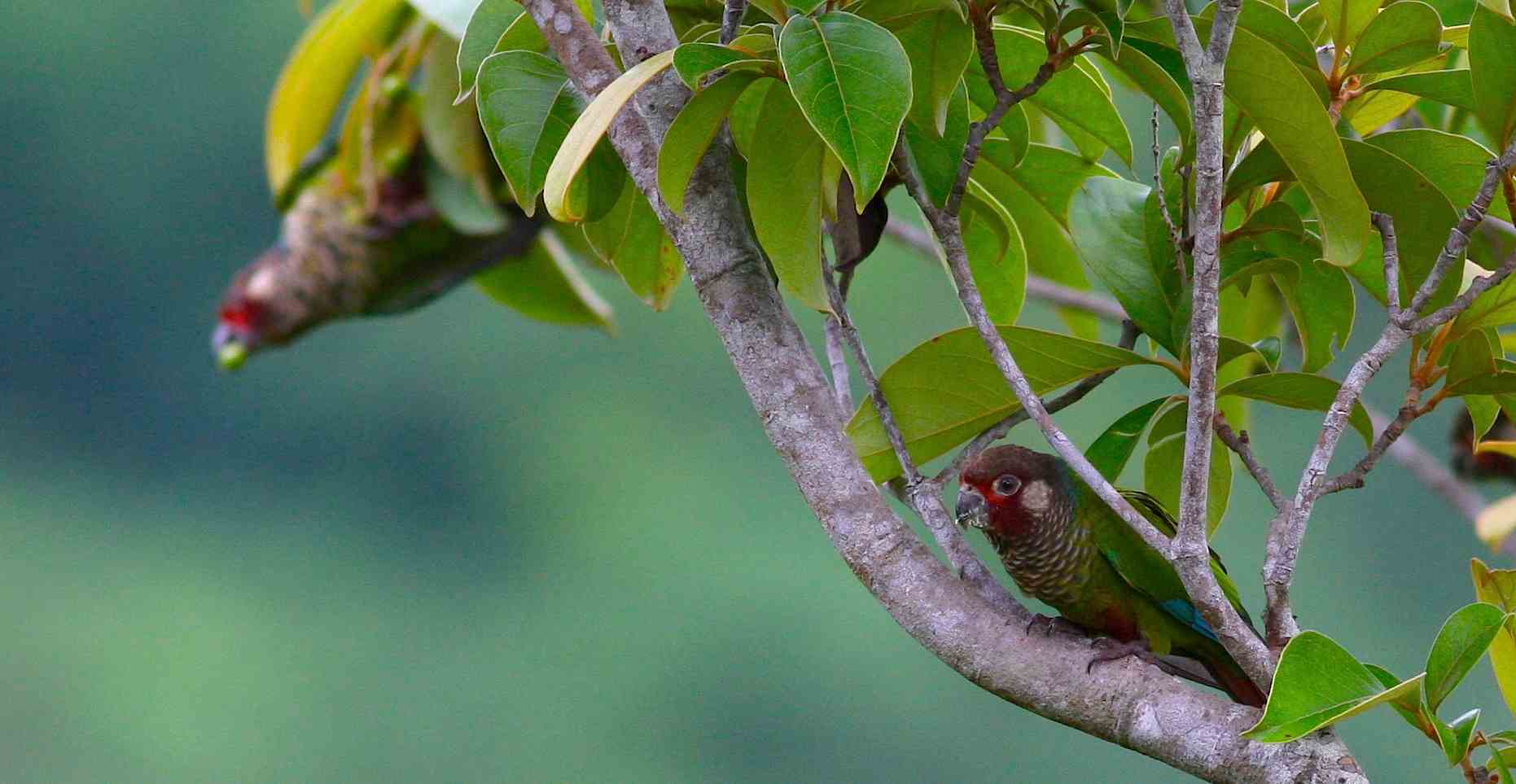Pyrrhura eisenmanni



Pyrrhura eisenmanni) , formerly regarded as Pyrrhura picta but now classified as a distinct species(as per Bird Life International) .
Endemic to the Azuero peninsula in the Cerro Hoya national park. Only 2000 are estimated to exist.
In the Azuero peninsula the species ocxcurs in the Parque Nacional Cerro Hoya. Little is known about this species . It has been spotted at elevations up to 1600 meters. There are reports of this species feeding on fruits of jabillo(Hura crepitans) -sandbox tree and maquenco (?) . It prefers forested areas with dense and tall trees. Like other parrots in this region, the breeding season coincides with the end of dry season (March through June) . Anecdotal reports exist of people owning these birds in this area. Wild caught individuals do not appear to do well in captivity , being rather nervous. However captive bred individuals are reported to be better adjusted.
Attribution: BeautyofBirds.com
The average clutch is anywhere from 4 to 9 eggs, and a good part of them tend to be infertile. Both parents share in the incubation duties, which will last 21 – 23 days. When not incubating, the male usually sits on or near the nesting box. The young fledge when they are about 50 days old. The consensus for captive breeding methods of Pyrhurra species is to implement a colony breeding strategy with multiple pairs being housed together .